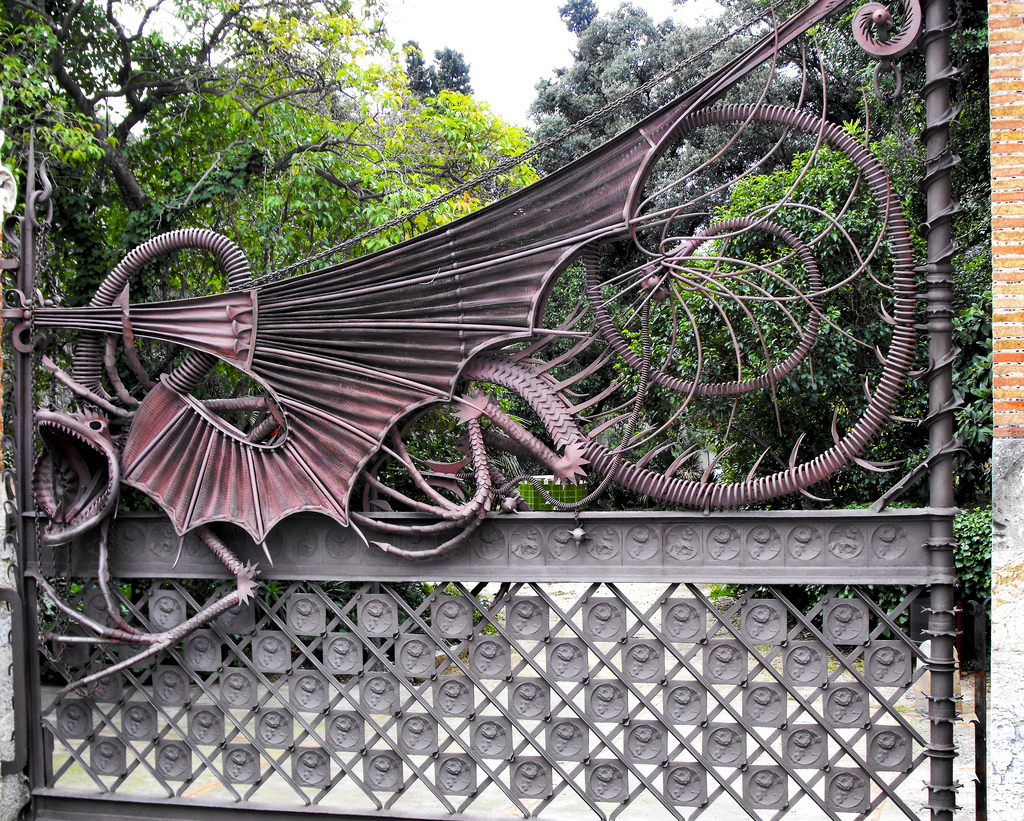Camille Claudel lived in Nogent sur Seine as a teenager, and from there, she was launched into her career as a sculptor, her talent carrying her to Auguste Rodin’s studio and into another complex world. The recently-opened Museum in Nogent sur Seine holds an important number of her sculptures, and offers a fascinating glimpse into the world of late 19th and early 20th century French sculptors.
Read MoreCreation
Parables of Creation /
The celebrated art dealer and collector, Ernst Beyeler, who died in Basel, Switzerland, last year, remarked, "I have always perceived works of art as parables of creation - analogous to nature, as Cezanne once said - an expression of joie de vivre". That perception and keenness of eye made him famous for his choices in art.
Art as a parable of creation is an interesting concept. In a literal sense, there has long been art which illustrates and teaches aspects of religion, particularly when the Catholic Church was, de facto, the sponsor of some of the world's greatest artists during the Renaissance time and beyond. One of the most celebrated examples is, of course, Michelangelo's Sistine Chapel ceiling.
Hands of God and Adam, Michelangelo, Sistine Chapel ceiling
This is one of the most iconic parts of that vast series of paintings, when God gives Adam the gift of life.
Artists explored every way they could conceive of conveying interpretations of creation, as written in the Bible. Some of this art also spoke of joie de vivre, of sensuous love, of beauty and of life. Nature came once more into prominence, as it had been in earlier Medieval art, when depictions of flowers, birds, and landscapes had symbolised holy matters. As the 16th century moved on in Italy, for instance, more and more artists were combining the richness of the new technique of oil painting with their draughting skills. Their subjects expanded to landscapes, cityscapes, everyday scenes – art where creation could have a much wider meaning. The same movement was happening in Northern Europe.
Rembrandt, for instance, was magisterial in his ability to create art that evoked deep meaning about creation, about man's condition, and - sometimes - joie de vivre. Interestingly, as highlighted by an exhibition this year at the Louvre and at the Philadelphia Museum of Art, Rembrandt broke with artistic tradition by using Jewish models to depict Christ and made his Christ a living person, not an icon due great reverence. Indeed, by the 17th century, the artistic vocabulary had become much more elastic; it could allude to many more emotions that were not so dictated by religious concept.
As art - and Western society - moved on through the centuries to our own, both the definitions of creation and joie de vivre have evolved hugely. Art became less and less "coded" and straightforward, so that knowledge of symbols, especially religious, became unnecessary. There can of course be many layers of meaning, but most paintings can be read to some degree, with consequent enjoyment. (Think of people's reactions to Impressionist paintings, or those of 20th century artists.) Nature has always contributed greatly to the joie de vivre of viewers, from flower paintings onwards. Now the parables of creation are more about general celebrations of life, our world in general.
Meanwhile, other civilisations' art (China, Japan, Korea, India, Islamic art, etc.) have been equally eloquent spokesmen for parables of creation - just in totally different fashion. In truth, personally, I have always found Japanese art totally intoxicating in its beauty and thus,joie de vivre.
Pine Trees, Hasagawa Tohaku six folded screens on paper, (Image courtesy of the Tokoyo National Museum.)
In the same way, exquisite Koranic calligraphy is sacred art and in a way, a very real parable of creation. Look at this:
Maghribi script version of a Koran Sura, done in North Africa in the 13th century (image courtesy of the Smithsonian Museum.)
I have strayed far from Ernst Beyeler's opinion, but I think his criteria of how to delight in beautiful art, of all descriptions, are very accurate. When a work of art rings true, is "analogous to Nature", then a viewer can indeed fall in love with that art at first glance - in other words, have a coup de foudre. What fun!
Back to drawing - hooray! /
How nice it is finally to get back to drawing after travels and the imbroglio of daily life! Life drawing is a passport to sanity for me and makes me feel more centered again. That hush in the room as a dozen or so artists concentrate on drawing is like a benediction; it reminds me that there is this whole union of artists out there all over the place, quietly doing their best to create art in all sorts of versions and visions, all intense and passionate. A nice universe of which to be a part!
Time and time again, I read in the press the comment from an artist that only when he or she is actively involved in art-making is there a sense of coherence, even harmony, in that artist's world. When one is not drawing, painting or whatever the creation involves, then there is a feeling of disquiet, dislocation. It is true in my case.
As I peer at the intricacy of fingers clasped, or the play of light on muscles on an arm or across a back, time becomes meaningless, for a while. That is a good feeling. It makes me think of the quote I read the other day from Antoni Gaudi, the great Catalan Modernist architect from the later 19th and early 20th century (think of la Sagrada Familia church in Barcelona): "Everything comes from the great book of nature." Life drawing is certainly part of that enormous and endlessly fascinating tome.
Main Gate, Dragon, Antoni Gaudi, Guell Park, Barcelona



